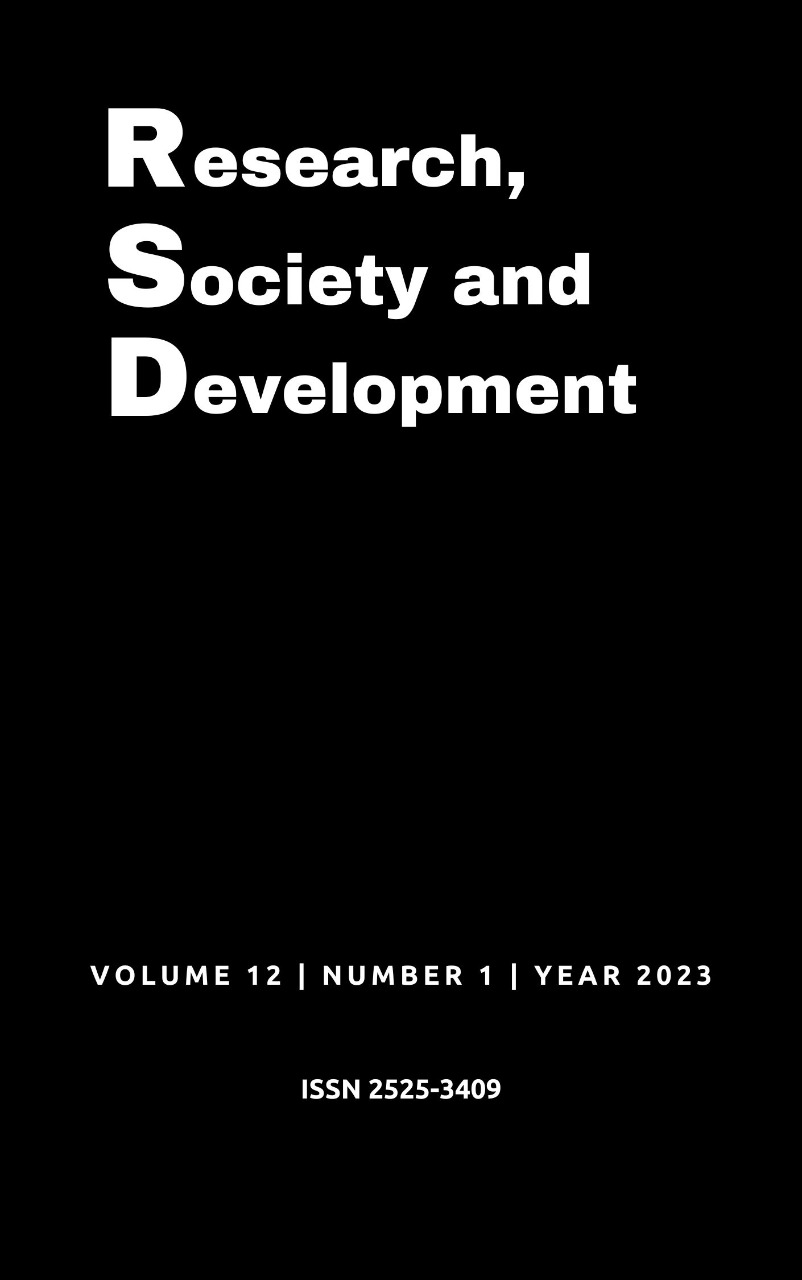Smell and taste alterations: incidence and persistence during the COVID-19 pandemic
DOI:
https://doi.org/10.33448/rsd-v12i1.38950Keywords:
Changes, Anosmia, COVID-19, Dysgeusia, Hyposmia.Abstract
After the beginning of the COVID-19 Pandemic, when analyzing the symptoms of the first cases of COVID-19, it was noted that the signs and symptoms most commonly presented by these patients were Gripal Syndromes. In addition, the presence of other clinical symptoms that were being presented by patients diagnosed with COVID-19 was also noticed, such as anosmia, hyposmia and dysgeusia, starting to be considered as relevant manifestations to be considered in the initial clinical diagnosis or the permanence after active infection of the disease. Based on this, the objective of this study was to elucidate changes in the sensory functions of smell and taste in patients diagnosed with COVID-19. In which, this research took place through an approach to the patients of a Pulmonology office in a teaching clinic of a private university in Teresina-PI. After the 133 interviewees, the results indicated that there was no persistence of smell and taste alterations, in most cases, being limited only to the acute phase of the infection. For this, the collected clinical data will contribute to the social context, in a way that will serve to update epidemiological data and knowledge for health professionals, with the purpose of guaranteeing better clinical assistance in evidence-based practice.
References
Brasil, Ministério da saúde. (2020). Painel COVID-19. 2020a. https://covid.saude.gov.br/.
Brasil, Ministério da Saúde. (2022). Plano Nacional de Operacionalização da Vacinação contra a Covid-19. 2022b. https://www.gov.br/saude/pt-br/coronavirus/vacinas/plano-nacional-de- operacionalizacao-da-vacina-contra-a-covid-19.
Brasil, Ministério da Saúde. (2021). Sintomas do Coronavírus. 2021. https://www.gov.br/saude/pt-br/coronavirus/sintomas.
Brasil. Organização Mundial da Saúde (2022). Coronavirus disease (COVID-19). https://www.who.int/emergencies/diseases/novel- coronavirus-2019>
Brasil. Organização Mundial da Saúde. (2020, 11 de março). OMS afirma que COVID-19 é agora caracterizada como pandemia. https://www.paho.org/pt/news/11-3-2020-who-characterizes-covid-19-pandemic.
Brasil. Secretária do Estado de Saúde. (2022). Coronavírus Piauí. 2022. http://coronavirus.pi.gov.br/.
BRASIL. (2022). Recomendações de proteção aos trabalhadores dos serviços de saúde no atendimento de COVID-19 e outras síndromes gripais. https://portalarquivos.saude.gov.br/images/pdf/2020/April/16/01-recomendacoes-de-protecao.pdf.
Campbell, W. W.; & Barohn, R. J. (2021) DeJong – O Exame Neurológico. Guanabara Koogan.
Carvalho Cardoso, M., Guimarães, L. S., de Andrade, I. J. M., Silva, A. H. G., Souza, G. C., Castro, L. A. M., ... & Zanuncio, A. V. (2020). Anosmia e disgeusia no paciente com coronavírus: revisão narrativa. Revista Eletrônica Acervo Saúde, (46), e4226-e4226.
Dolce Filho, R., Nechar, R. C., & Ribeiro Filho, A. (2020). Estudo preliminar de sintomas e medicamentos prevalentes do gênio epidêmico da pandemia de covid-19 no Brasil.
Estrela, C. (2018). Metodologia científica: ciência, ensino, pesquisa. (Métodos de pesquisa) (3rd ed.). Grupo A. https://integrada.minhabiblioteca.com.br/books/9788536702742.
Finsterer, J., & Stollberger, C. (2020). Causes of hypogeusia/hyposmia in SARS‐CoV2 infected patients. Journal of medical virology.
Gros, J. L., Coma, M. I., Farré, M. G., & Pujadas, C. S. (2020). Alteraciones del olfato en la COVID-19, revisión de la evidencia e implicaciones en el manejo de la pandemia. Acta Otorrinolaringológica Española, 71(6), 379-385.
Lechien, J. R., Chiesa-Estomba, C. M., De Siati, D. R., Horoi, M., Le Bon, S. D., Rodriguez, A., ... & Saussez, S. (2020). Olfactory and gustatory dysfunctions as a clinical presentation of mild-to-moderate forms of the coronavirus disease (COVID-19): a multicenter European study. European Archives of Oto-rhino-laryngology, 277(8), 2251-2261.
Li, L. Q., Huang, T., Wang, Y. Q., Wang, Z. P., Liang, Y., Huang, T. B., ... & Wang, Y. (2020). COVID‐19 patients' clinical characteristics, discharge rate, and fatality rate of meta‐analysis. Journal of medical virology, 92(6), 577-583.
Lovato, A., & De Filippis, C. (2020). Clinical presentation of COVID-19: a systematic review focusing on upper airway symptoms. Ear, Nose & Throat Journal, 99(9), 569-576.
Gorbalenya. The species Severe acute respiratory syndrome-related coronavirus: classifying 2019-nCoV and naming it SARS-CoV-2. Nature microbiology, 2020.
Moura, E. S. de., Salum Neto, O. A. L. ., & Freitas, F. M. N. de O. (2022). Mudanças no comportamento alimentar e olfativo proporcionadas pela Covid-19. Investigação, Sociedade e Desenvolvimento, 11(15), e58111537080. https://doi.org/10.33448/rsd-v11i15.37080.
Regezi, J., Sciubba, J. J., & Jordan, R. C. (2017). Patologia oral: correlações clinicopatológicas. Elsevier Brasil.
Zhu, N., Zhang, D., Wang, W., Li, X., Yang, B., Song, J., ... & Tan, W. (2020). A novel coronavirus from patients with pneumonia in China, 2019. New England journal of medicine.
Downloads
Published
Issue
Section
License
Copyright (c) 2023 Letícia Moreira Ramos; Manoel Victor Carvalho Coelho; Marcella Matias Torres; Hellen Cristina Pimentel Andrade ; André Gonçalves da Silva

This work is licensed under a Creative Commons Attribution 4.0 International License.
Authors who publish with this journal agree to the following terms:
1) Authors retain copyright and grant the journal right of first publication with the work simultaneously licensed under a Creative Commons Attribution License that allows others to share the work with an acknowledgement of the work's authorship and initial publication in this journal.
2) Authors are able to enter into separate, additional contractual arrangements for the non-exclusive distribution of the journal's published version of the work (e.g., post it to an institutional repository or publish it in a book), with an acknowledgement of its initial publication in this journal.
3) Authors are permitted and encouraged to post their work online (e.g., in institutional repositories or on their website) prior to and during the submission process, as it can lead to productive exchanges, as well as earlier and greater citation of published work.


